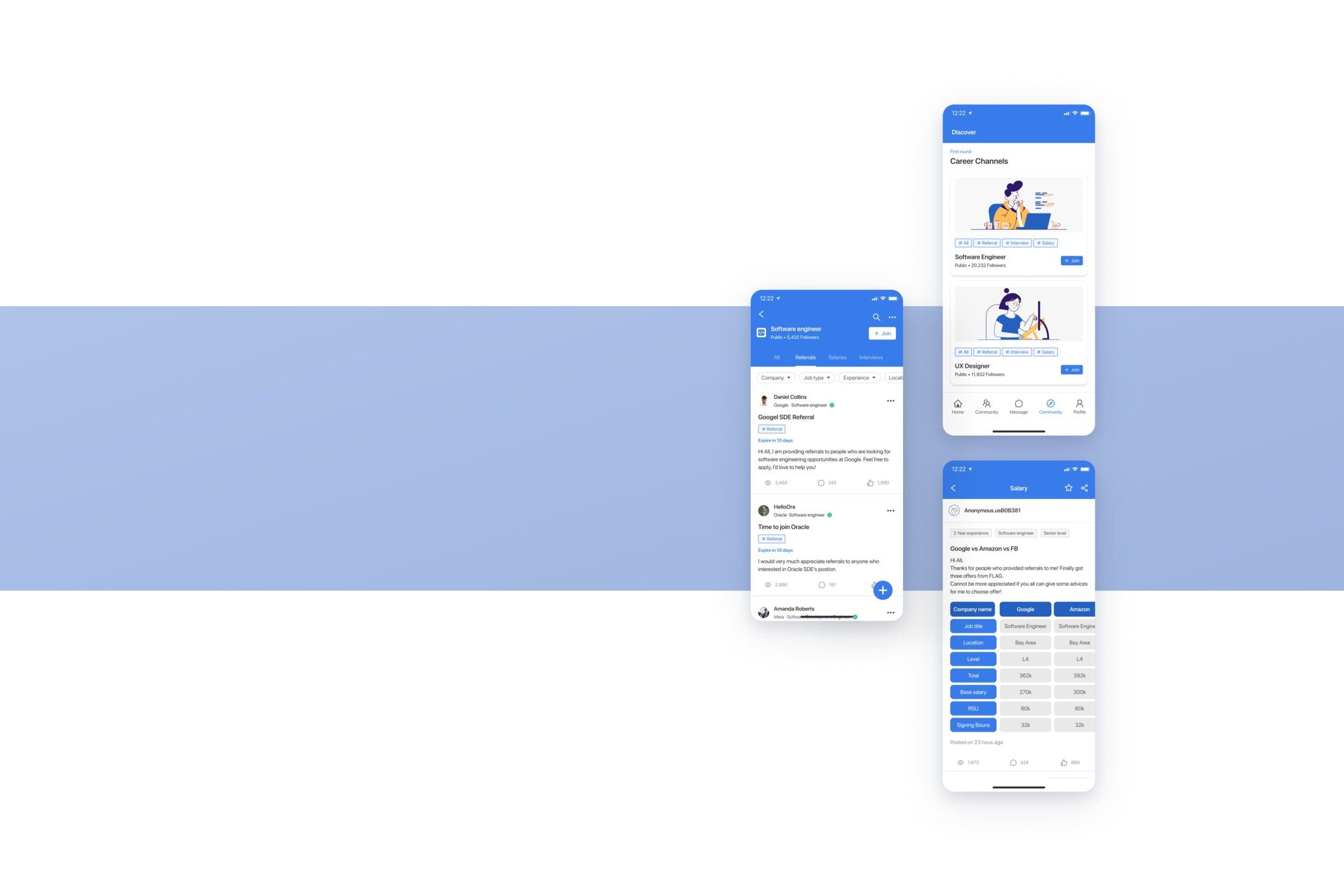
Soca - Anonymous mode
How can we make it easy for users to share information while maintaining privacy?
Overview
-
Objective
Our users need more privacy when sharing work-related content.
So how might we make it easy for users to share information while maintaining privacy?
-
What I did
Owning the end-to-end design process
Running user testings
Feature presentation
Designing landing page
Creating and revamping the design system
-
Outcome
4.4% increase in average user postings compared to the initial design.
Surpassed 300 downloads in no more than 1 month — it launched in the app store in Mid December 2021.
-
My Team
3 Designers
1 Product Manager
4 Engineers
1 Data Scientist
Context
At the very beginning, Soca is mainly a tool for job-seekers to find referrals and referral providers to manage job referrals. This is to avoid the social awkwardness of cold calling and help match the two parties together to complement each other's needs.
However, during the research, I find more pain points from the market, job-seekers, referral providers, and people who have hiring needs. Those insights motivate me to have a more precise roadmap of the Soca.
Anonymous mode is the crucial feature after the MVP. The goal is to safeguard users' privacy when using the product so that the posting volume can grow without incentives in the early stages of the product.
Greetings from Soca! You can watch and feel about it through this video.
Sneak peak at the landing page!
When the MVP product is under implementation, I revisit the research doc and brainstorm with another two designers for phase 2 features.
Research Findings
“I prefer to hide my real name if I share something like benefits or salary on internet.”
“Unless it is with a very close friend, no one will use their real name to share what questions they tested in the interview, which may affect the job security.”
When I use LinkedIn, I feel that the world is too small when people use their work identities to socialize. We need an alias to protect ourselves, and inevitably there are times when we gossip, gossip and gossip…
From the research, I know about the users goal. Realizing the needs of users can achieve business needs at the same time.
User Goal:
Create posts without worries
Business Goal:
Drive posting volume
Build a scalable product
Problem & Solution 1
Initial Design↓
After designing the initial experience of anonymous mode, I created a testing plan (includes qualitative & quantitative) for validating the design.
Users asked some questions in the 1st-round usability testing and those questions motivate me to iterate the experience.
Problem: How to prevent users from using wrong names?
“I might forget to switch to the anonymous mode when sharing interview questions...”
Solutions
Creating Interview or Salary posts (click to enlarge the image)
Make the experience more intuitive
Add more interactivity to the experience
Use dark mode to differentiate between the anonymous mode and default mode.
Creating Referral or General posts (click to enlarge the image)
Always keep users informed about the status
Include visible instructions to let users recognize their selected option.
Prevent errors through the conversation between interface and user.
Problem & Solution 2
Problem: What should be the name format under anonymous mode?
←Recap the initial design of the Anonymous post card.
Some users are confused about the name format under anonymous mode. Their questions are as below:
“Why put username if it’s anonymous name?”
“What if some people can infer my personal info from the username?”
Solution
How it looks after creating an anonymous post
Use the name format as ‘Anonymous+generated ID’, a universal way for users to recognize as ‘Anonymous Post’.
Hide identity completely
Anonymous exclusive avatar
Outcome
4.4%↑
increase in average user postings compared to the initial design.
166.7%↑
52%↑
The task success rate of 2nd testing increase to 80% from 30%.
Time-on-task(average task completion time) reduced from 67s to 32s.
Takeaways
Always eager for more user insights
My favorite part is to be involved in the end-to-end design process. In this process, I get to hear directly from the users. Their different backgrounds give us a fresh perspective on how to think about the product and optimize it. Our team members also come from different cultures. When we were designing the anonymous mode, none of us realized that usernames and anonymity were actually incompatible to some degree. It was the users who pointed that out to us.
Think about the scalability
This is the first time I have been designing and developing a real product from scratch. This experience made me keep telling myself to look at the whole product from a bigger perspective, think about the state of the product at different stages, and prioritize the features. More importantly, it was essential to consider whether there were scalable ways to solve the problem.












